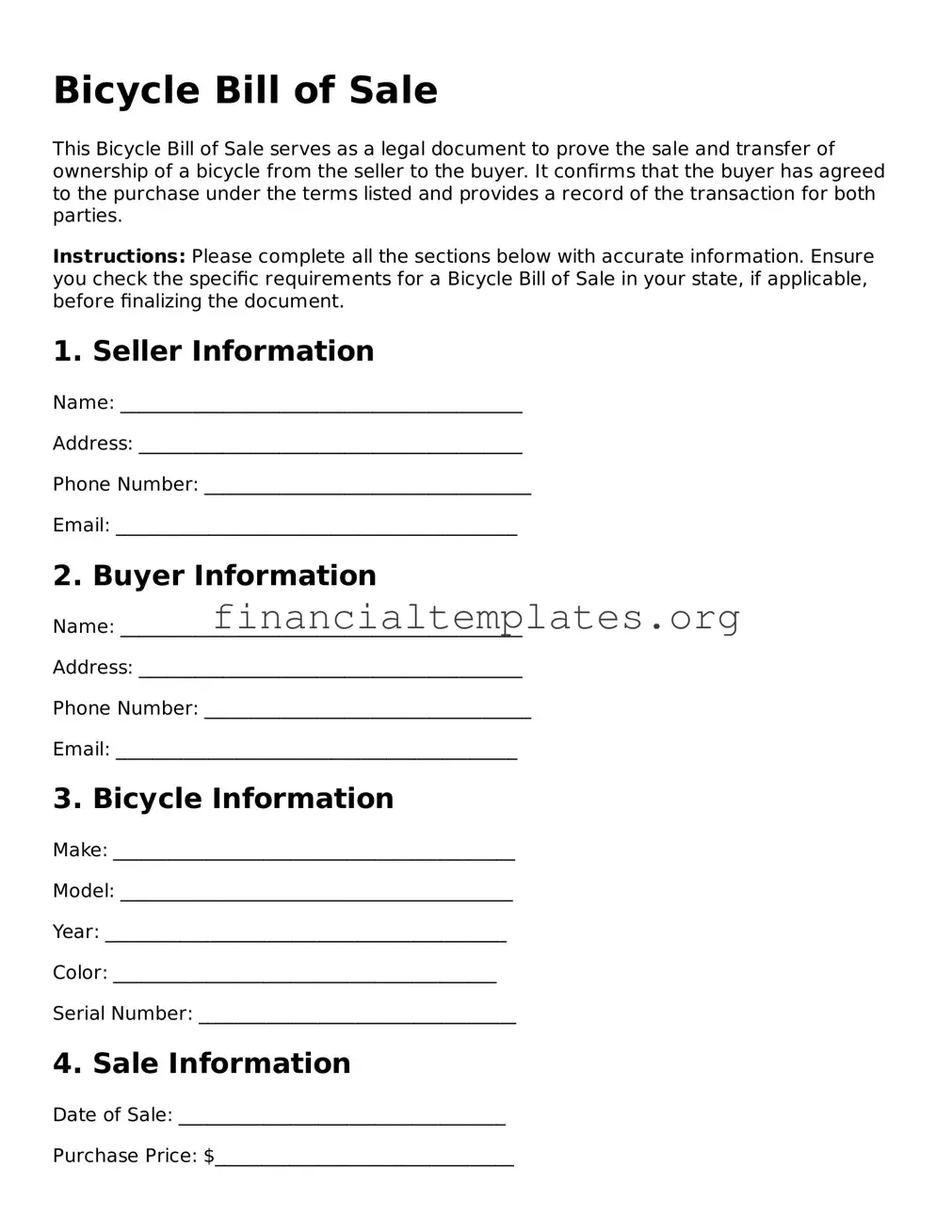Bicycle Bill of Sale
This Bicycle Bill of Sale serves as a legal document to prove the sale and transfer
of ownership of a bicycle from the seller to the buyer. It confirms that the buyer has
agreed to the purchase under the terms listed and provides a record of the transaction
for both parties.
Instructions: Please complete all the sections below with accurate information. Ensure you check the specific
requirements for a Bicycle Bill of Sale in your state, if applicable, before finalizing
the document.
1. Seller Information
Name: ___________________________________________
Address: _________________________________________
Phone Number: ___________________________________
Email: ___________________________________________
2. Buyer Information
Name: ___________________________________________
Address: _________________________________________
Phone Number: ___________________________________
Email: ___________________________________________
3. Bicycle Information
Make: ___________________________________________
Model: __________________________________________
Year: ___________________________________________
Color: _________________________________________
Serial Number: __________________________________
4. Sale Information
Date of Sale: ___________________________________
Purchase Price: $________________________________
Method of Payment:
- Cash
- Check
- Other: ______________________________________
5. Additional Terms or Conditions
__________________________________________________________________________
__________________________________________________________________________
6. Signatures
Once both parties have reviewed and agreed to the terms outlined in this document,
signatures below will serve as a testament to the agreement and transfer of ownership.
Seller's Signature: ______________________________ Date: _________________
Buyer's Signature: _______________________________ Date: _________________
Note: This document does not necessarily serve as proof of ownership unless accompanied by additional evidence
such as a sales receipt or manufacturer's certificate. It is advised to store this document safely as
it may be required for future reference or proof of transaction.
